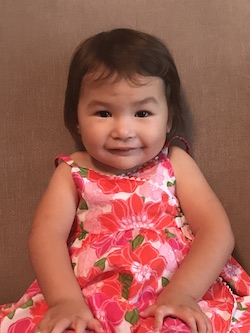
Jun 05, 2020
The participant was found to have limited joint movement (arthrogryposis) prenatally. She has required surgery to restore more flexibility to some of her joints. She currently has contractures at her shoulders, elbows and hips. She also has deviated fingers and toes, small thumbs, and rocker bottom feet (bilateral vertical talus).
The participant has been diagnosed with low muscle tone (hypotonia), developmental delays, feeding problems and abnormal hip development (dysplasia, subluxations) as well. In addition, she has short stature and some facial differences (hypertelorism, micrognathia, epicanthus).
The participant has been making developmental progress over time and is currently nonverbal.

Clinicians and researchers have identified the following genetic change to be causing the participant’s symptoms:
Xq11.2 deletion (base pair coordinates: 64,951,692-65,166,933, genome build GRCh38) involving the ZC4H2 gene
If this participant sounds like you or someone you know, please contact us!